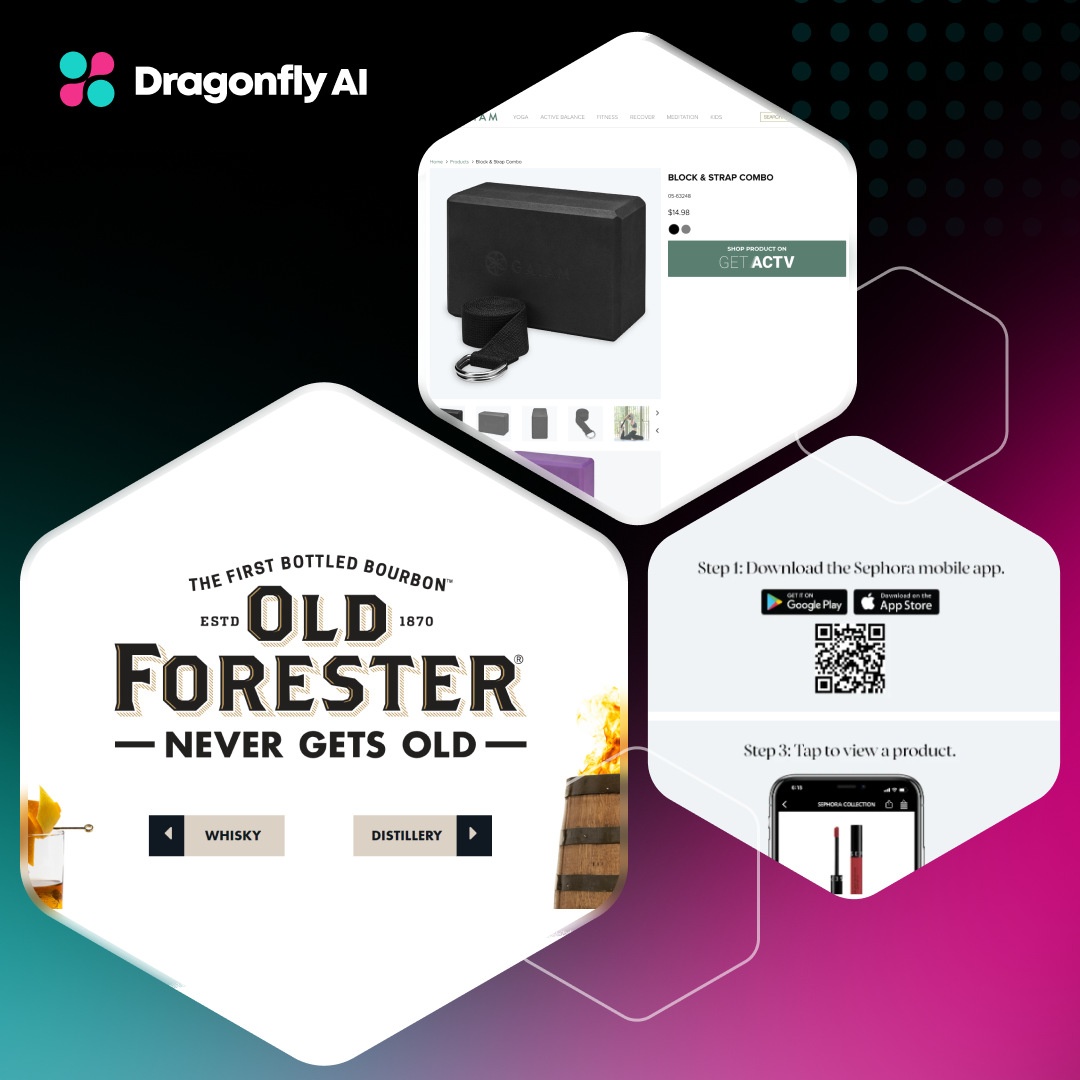The retail industry thrives on capturing a shopper's attention. At the heart of this lies point-of-sale (POS) displays. They are the silent salespeople guiding the shopper's journey. When used correctly, they have the power to increase a shopper’s basket size or turn simple intrigue into a purchase.
The Significance of Point-of-Sale Displays
Point-of-sale displays are strategic assets in the active aisles of today's retail stores. They have the ability to shape shopper behavior and influence decision-making right at the critical point of sale.
Well-designed POS displays actively contribute to retail sales which marks them as essential components in today’s competitive market.
Brands that use POS displays have reported an impressive 140% sales increase over businesses that don’t make use of them.
When done right, POS displays can:
-
Enhance visibility: POS displays amplify the visibility and awareness of services and products, rendering them more noticeable to shoppers.
-
Elevate sales: Through well-designed and eye-catching displays, there's a significant elevation in brand awareness and a consequent boost in sales.
-
Augment customer engagement: POS displays have the potential to augment customer engagement, crafting a memorable shopping experience.
-
Extend brand exposure: With high customizability, POS displays allow for attractive branded materials that promote your products in a manner consistent with your brand's ethos.
-
Capture attention: POS displays are adept at capturing shoppers' attention, nudging them to make a purchase. Shopping is often an autopilot activity, but a captivating POS display can switch shoppers from autopilot to a more engaged "manual control" mode.
-
Assess impact: The efficacy of POS displays can be assessed through metrics like impact ratio, engagement ratio, sales lift, and return on investment.
.png?width=600&height=600&name=Blog%20image%201%20(4).png)
In a sector where every interaction with the shopper matters, POS displays hold a crucial role. They are the facilitators in the retail space, aiding the journey of a shopper from initial interest to actual purchase, all while seamlessly integrating brand messaging.
According to research, sales with signs performed 20% better than those without. Through strategic placement and appealing design, they work quietly yet effectively, contributing significantly to the retail success story.
Elements of Effective Point-of-Sale Displays
Point-of-sale displays act as their own powerful storytellers in the retail landscape and significantly influence consumer behavior. Let's explore the elements that contribute to an effective POS display.
Visual charm
The first touchpoint is the visual appeal. A POS display should captivate the shoppers' attention amidst the retail hustle. For instance, Apple stores are known for their minimalist yet enticing displays that spotlight their products, drawing customers into their sleek, tech-savvy world.
Strategic positioning
Placement is pivotal. It's about situating the display where it’s most likely to be encountered by the target audience. In grocery stores, eye-level shelves are often reserved for premium or popular products, making them easily accessible and noticeable to shoppers.
Engaging messaging
An effective POS display communicates the brand ethos succinctly. It's a salesperson providing necessary information that resonates with the shoppers' needs and desires. The LEGO Store, with its vibrant displays showcasing assembled products, entices the imagination and clearly communicates what's inside the box.
The Art of Designing Compelling Displays
An enthralling POS display resembles painting a picture, albeit with a strategic aim. It's an artful blend of aesthetics and functionality. Color choices, graphics, and branding elements should echo the brand's ethos while enticing shoppers' senses and emotions.
It's about creating a visual narrative that aligns with the brand's identity and holds a magnetic allure for shoppers. Every element, from hues to imagery, should be meticulously chosen to reflect the brand’s persona while also engaging and resonating with the shopper to evoke a sense of connection that transcends the mere act of purchasing.
.png?width=800&height=438&name=Blog%20image%202%20(5).png)
Data-Driven Approaches to Point-of-Sale Displays
In this big data era, employing analytics in crafting POS displays can be transformative. Insights from customers and market research underpin a data-oriented strategy so brands can enjoy a refined grasp of shopper inclinations and actions.
This intel guides the design and location of POS displays, markedly amplifying their efficacy in the process. For instance, Walmart leverages data analytics to optimize shelf layouts, ensuring products are positioned to catch the shopper's eye based on purchasing trends.
This practical approach allows for a more tailored shopping environment, adjusting POS displays to match shopper preferences. As a result, it creates a more engaging and rewarding retail area that strikes a chord with customers.
Neuromarketing Techniques for Point of Sale
Neuromarketing at the point of sale unveils layers of shopper psychology, offering a goldmine of insights for optimizing POS displays. Techniques such as eye-tracking and emotional resonance delve into subconscious reactions, unveiling how shoppers interact with displays on a deeper level. Harnessing these insights can transform POS displays into psychologically engaging platforms.
Key benefits include:
-
Deeper engagement: Tailored displays that resonate with shopper emotions and cognition.
-
Enhanced effectiveness: Increased output of POS displays in driving purchase decisions.
-
Informed design choices: Data-backed decisions on layout, visuals, and messaging.
A blend of neuromarketing techniques with traditional design principles can yield POS displays that are visually appealing and psychologically captivating, fostering a deeper connection with the shopper while amplifying the potential for sales conversion.
Real-World Examples of Successful Displays
Look no further than these examples that underscore the immense potential and effectiveness of well-designed POS displays in driving shopper engagement and boosting sales.
Apple store displays
Again, Apple's minimalist design ethos extends to its in-store displays. Sleek tables with neatly arranged products allow customers to interact with the gadgets firsthand, embodying the brand’s premium and modern aesthetic.
L'Occitane en Provence
L'Occitane’s boutiques often have open-shelf displays so customers can smell and try products. This creates an inviting, sensory-rich experience that is first led by engaging visuals designed to draw the shopper in.
Barnes and Noble
Barnes & Noble employs engaging POS displays to highlight genres, new releases, or bestsellers, inviting customers to browse and buy. Thematic and well-placed displays encourage exploration, aligning with the brand's community-centric identity.
Measuring Success and ROI
Assessing the return on investment for POS displays is pivotal for top-level results and continuous enhancement of products. Key metrics include:
- Foot traffic: How many people walk past your POS display?
- Engagement: Out of the passers-by, who is stopping to interact?
- Sales conversions. And of the people stopping to engage, how many are converting into paid customers?
Tracking these metrics sharpens display performance, ensuring sustained attention capture and effective sales drive. Meticulous analysis of metrics empowers retailers to make informed tweaks to display elements that resonate with shoppers and maximize ROI, fuelling the retail store's overall success.
.png?width=1280&height=700&name=Blog%20image%203%20(4).png)
Future Trends in Point-of-Sale Displays
POS displays are evolving with digital and interactive innovations. Incorporations like touch screens, augmented reality, and interactive demos now craft a novel retail narrative that enriches the shopping journey with engaging and informative encounters.
Through these advancements, POS displays are morphing into interactive hubs, offering a blend of tactile and digital experiences that not only enthrall shoppers but also provide valuable insights. They’re paving the way for a more interactive and insightful retail environment.
Increase Shopper Attention on Your Point-of-Sale Display
Captivating shopper attention through POS displays is an art fortified with strategic insights, creativity, and technological advancements. Investing in effective display strategies is a smart option for retail success in the modern market landscape. The journey from a casual glance to a confirmed purchase is orchestrated beautifully through well-designed, insightful POS displays.
Read more:
Drive Sales with Shopper Marketing Technology
Retail Media Trends 2025 - Predictions for CPG Companies
The Ultimate Guide to Retail Store Analytics
Using AI To Optimize Your Retail Store Layout
Supercharging Growth Through Retail Analytics
The Value of Retail Agility Driven by AI


.png?width=600&height=600&name=Blog%20image%201%20(4).png)
.png?width=800&height=438&name=Blog%20image%202%20(5).png)
.png?width=1280&height=700&name=Blog%20image%203%20(4).png)
